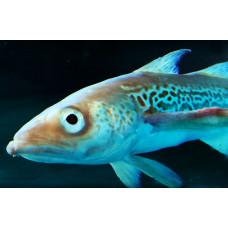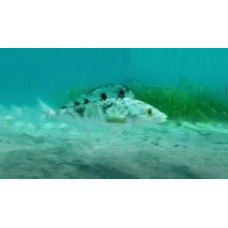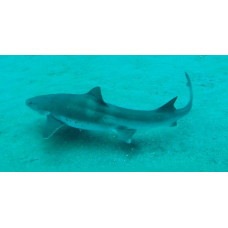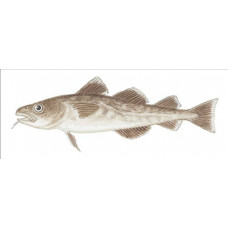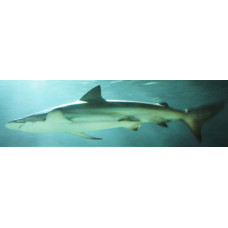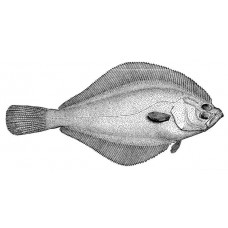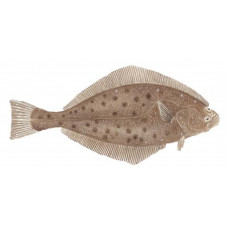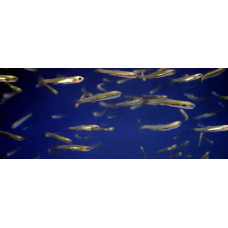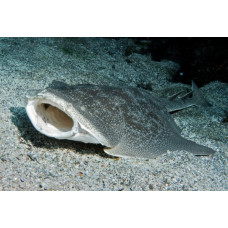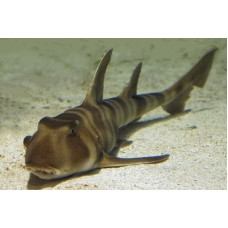Fauna of the Sea of Japan

A marginal sea in the Pacific Ocean, separated from it by the Japanese islands. It is separated from the neighboring Sea of Okhotsk by Sakhalin Island and from the neighboring Yellow Sea by the Korean Peninsula. Originally, it is a deep-water pseudoabyssal intrashelf depression connected to other seas and the Pacific Ocean by 4 straits: the Korean (Tsushima), Tsugaru (Sangara), La Perouse (Soya) and Nevelsky Straits. It washes the coasts of Russia, Japan, the Republic of Korea and the DPRK. A branch of the warm Kuroshio current enters from the south.
The sea has a surface area of 1,062,000 km². The maximum depth is 3,742 m (41°20′N 137°42′E). The northern part of the sea freezes in winter.
The climate of the Sea of Japan is temperate, monsoonal. The northern and western parts of the sea are considerably colder than the southern and eastern parts. During the coldest months (January-February), the average air temperature is about -20°C in the northern part of the sea and about +5°C in the south. The summer monsoon brings warm and humid air. The average air temperature of the warmest month (August) is about +15°C in the northern part and about +25°C in the southern areas. In autumn, the number of typhoons caused by hurricane winds increases.
The surface currents form a cycle consisting of the warm Tsushima Current in the east and the cold Primorsky Current in the west. In winter, the surface water temperature rises from -1...0 °C in the north and northwest to +10-+14 °C in the south and southeast. Spring warming causes a fairly rapid increase in water temperature throughout the sea. In summer, the surface water temperature rises from 18-20 °C in the north to 25-27 °C in the south of the sea. The vertical distribution of temperature is different in different parts of the sea in different seasons. In summer, in the northern parts of the sea, the temperature of 18-10 °C is maintained in the layer of 10-15 m, then it sharply decreases to +4 °C at the horizon of 50 m, and starting from the depth of 250 m, the temperature remains constant around +1 °C. In the central and southern parts of the sea, the water temperature decreases rather smoothly with the depth, reaching +6 °C at the horizon of 200 m, starting from the depth of 250 m, the temperature remains around 0 °C.
The salinity of the water of the Sea of Japan is 33.7-34.3 ‰, which is slightly lower than the salinity of the water of the world ocean.
The underwater world of the northern and southern parts of the Sea of Japan is very different. In the cold northern and northwestern regions, the flora and fauna of temperate latitudes have developed, while in the southern part of the Sea, south of Vladivostok, the warm-water fauna complex predominates. Near the coast of the Far East there is a mixture of warm-water and temperate fauna.
Common Inhabitants of the Sea of Japan
Octopus and squid, typical representatives of warm seas, can be found in this sea. Vertical walls covered with actinia, gardens of brown algae - kelp - are reminiscent of the landscapes of the White and Barents Seas. In the Sea there is a huge abundance of sea stars and sea urchins of different colors and sizes, there areophiuroids, small crabs (Red king crab are found here only in May, then they go further out to sea) and shrimps. The most famous is the Pandalus latirostris. Cucumaria japonica is a well-known inhabitant of these waters, it is very similar to the trepang. It inhabits all the Far Eastern seas, but at greater depths than the latter. Among the stars, the most common is the Northern Pacific seastar, which reaches 32 cm in diameter and moves at a speed of 10 cm per minute. There is also the Blue bat star, which can easily be found in the coastal zone after a storm. Bright red ascidians live on rocks and stones. There are about 30 species of seals, dolphins and whales, and more than 900 species of fish. Among the latter, Sarcastic fringehead, Flathead flounder, Pacific Dover sole, Alaska pollock, Masu salmon, and Chum salmon are common. The Japanese spiky sea cucumber and the Sculptured Shrimp are common.
Commercial Species in the Sea of Japan
Of all the fish species in the Sea of Japan, just under 200 are commercially important. Chinook salmon, Pacific cod, Pacific halibut, Fourhorn sculpin and Snailfish are year-round residents. Permanent residents of these waters are, Pink salmon, Saffron cod, Snail-fin poacher. Such warm water fishes as Chub mackerel, Pacific saury, Japanese anchovy, Flat needlefish can be found near the coast. Atka mackerel, Masked greenling and Japanese sea bass feel comfortable at all temperatures. Trepangs are also abundant in the reservoir. The sea urchin fishery is highly developed, as their caviar is a popular delicacy in Asia. Among mollusks, scallops are the most common. There is an active octopus and squid fishery. One of the largest species of cephalopods, the Giant Pacific octopus, is also found here. An adult weighs about 50 kg and reaches 3 meters in length (including tentacles). Jellyfish have long been used as food in Thailand, Japan, Korea, Malaysia, Indonesia and the Philippines. The Rhopilema esculentum is considered one of the most prized delicacies.
Rare inhabitants of the Sea of Japan
In addition to the permanent residents, there are also rare fish unusual for the local climate: Swordfish, Ocean sunfish, Purple puffer, Japanese puffer, and Oceanic two-wing flyingfish. In the coastal thickets swim seahorses, needlefish, various mollusks, butterfly fish and gurnards. At the bottom of the sea live Agonomalus jordani, and red scorpionfish. Swim in the Sea of Japan and quite exotic species. For example: red barracuda.
Dangerous Inhabitants of the Sea of Japan
The Sea of Japan is also home to dangerous creatures. Large sharks, Whiptail stingray and poisonous sea snakes are rare. It is undesirable to come into contact with sea urchins because their injections cause painful sensations, and if you do not remove the needles immediately, it will be extremely difficult to remove them later. There is also a danger of encountering a Clinging jellyfish. Touching it causes a burning reaction. Sharks are one of the most dangerous predators.
Sharks in the Japanese sea
There are about 14 species of these dangerous fish. When it is warm, sharks may come close to the coastal zone, but in most cases you can meet a Spiny dogfish near the shore, which is not a threat to humans. The high seas have become home to sharks such as: Banded houndshark, Japanese bullhead shark, Japanese wobbegong, Starspotted smooth-hound, Sandbar shark, Japanese angelshark, Salmon shark, Copper shark, Shortfin mako shark, Blue shark, Smooth hammerhead, Great white shark, Basking shark.
Mammals of the Sea of Japan
The Sea of Japan is home to about 30 species of seals, dolphins and whales. Among them are sei whale, blue whale, gray whale, humpback whale, southern right whale, fin whale and minke whale. There are also many species of toothed whales. Among them are: sperm whale, white-winged porpoise, northern fin whale, beluga whale, Pacific white-sided dolphin, small killer whale. There are six species of seals such as the Bearded seal, Steller sea lion, Northern fur seal, Ringed seal, Spotted seal and Ribbon seal.
Agonomalus jordani
Latin nameAgonomalus jordaniOther nameAgonomalus brashnikowi Pavlenko, Agonomalus jordani Jordan &am..
Alaska pollock
Latin nameGadus chalcogrammusOther namesWalleye pollockIdentificationAlaska pollack have very large ..
Atka mackerel
Latin namePleurogrammus monopterygiusOther namePleurogrammus monopterygiusIdentificationThe body of ..
Banded houndshark
Latin nameTriakis scylliumOther nameTriakis scylliumIdentificationThe banded houndshark has a short,..
Chub mackerel
Latin nameScomber japonicusOther namePacific mackerel, or Pacific chub mackere.IdentificationThe chu..
Cod, Pacific
Latin name Gadus macrocephalus Other names Сod, gray cod, true cod; French: morue du Pacifique; ..
Copper shark
Latin nameCarcharhinus brachyurusOther namesBronze whaler,narrowtooth shark.IdentificationIt has a s..
Dogfish, Spiny
Latin name Squalus acanthias Other names Dogfish, dog shark, grayfish, Pacific grayfish, Pacific ..
Flat needlefish
Latin nameAblennes hiansOther nameBarred longtomIdentificationThe body of the flat needlefish is elo..
Flathead flounder
Latin nameHippoglossoides dubiousOther namesHippoglossoides dubiousIdentificationBody moderately tal..
Fourhorn sculpin
Latin nameMyoxocephalus quadricornisOther nameMyoxocephalus quadricornisIdentificationThe fourhorn s..
Halibut, Pacific
Latin name Hippoglossus stenolepis Other names Giant halibut, northern halibut, hali (Canada), ba..
Japanese anchovy
Latin nameEngraulis japonicusOther namesEngraulis japonicusIdentificationBody elongated, moderately ..
Japanese angelshark
Latin nameSquatina japonicaOther nameSquatina japonicaIdentificationThe Japanese angelshark has a ra..
Japanese bullhead shark
Latin nameHeterodontus japonicusOther nameHeterodontus japonicusIdentificationThe Japanese Bullhead ..


